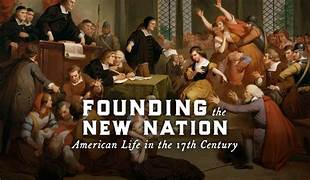The New Nation
🎆 A Revolutionary Experiment Begins
With the Revolutionary War behind them, the people of the United States stood at the edge of an uncertain future. They had won independence, but not stability. The 13 colonies had become sovereign states, each with their own currencies, laws, and priorities. There was no central authority strong enough to unify them or to address national issues like trade, debt, or defense. The Articles of Confederation provided only a loose alliance, with a weak Congress that had no power to tax or enforce laws. The ideals of liberty and self-rule were clear—but how to govern a nation so large, diverse, and untested was not.
📜 From Revolution to Responsibility
Victory had come at a high cost—lives lost, economies strained, and unresolved tensions between states. Farmers struggled under debt, and veterans waited for pay. The new nation found itself facing uprisings like Shays' Rebellion, exposing the fragility of the union. Many leaders feared the dream of independence would unravel into chaos. As states quarreled and the Confederation faltered, it became clear that the young republic needed a stronger foundation—one that could preserve liberty while providing stability and order.
🏛️ The Constitutional Convention
In 1787, delegates from 12 of the 13 states gathered in Philadelphia to address the crisis. Originally intended to revise the Articles of Confederation, the meeting quickly became something much more ambitious: the creation of an entirely new government. The result was the U.S. Constitution—a revolutionary document that established a federal system with three separate branches of government, checks and balances, and a Bill of Rights to protect individual liberties. It was a bold act of political invention, rooted in Enlightenment thought, shaped by practical experience, and animated by the Founders’ belief in the capacity of the people to govern themselves.
⚖️ A Government of the People
At the heart of the Constitution was a simple but powerful idea: the people are the source of government authority. Rather than kings or aristocrats, the power would come from citizens—through voting, representation, and the rule of law. The legislative branch would make laws, the executive would enforce them, and the judiciary would interpret them. Each branch would have limits and responsibilities, designed to prevent tyranny and preserve liberty. The Founders knew the stakes were high. As Benjamin Franklin famously warned, the nation would be “a republic—if you can keep it.”
💰 Building an Economy from Scratch
The early republic also faced daunting economic challenges. War debt loomed large. There was no national currency, and inflation ran rampant. Secretary of the Treasury Alexander Hamilton proposed bold reforms: the federal government would assume state debts, create a national bank, and encourage manufacturing. These moves helped establish financial stability and built public trust in the new government—but they also sparked fierce political debate. Still, the economic groundwork laid in those early years helped the United States move from fragility to strength.
🌍 Foreign Policy in a Dangerous World
Surrounded by European empires and wary of entangling alliances, the United States had to navigate a world filled with threats. Britain still occupied forts in the Northwest. Spain controlled the Mississippi River. France expected repayment for its wartime aid. President George Washington, in his Farewell Address, advised the young nation to avoid permanent foreign alliances and focus on its own development. This cautious but principled approach helped the United States survive in a hostile global environment while laying the foundation for a future role on the world stage.
⚔️ Growing Pains and Political Divisions
Despite the hopes of unity, political divisions quickly emerged. The Federalists, led by Hamilton and Adams, favored a strong central government and close ties with Britain. The Democratic-Republicans, led by Jefferson and Madison, championed states’ rights and a limited federal government. These early party struggles revealed deep disagreements about the meaning of liberty, the role of government, and the direction of the new nation. Yet these debates, fierce as they were, also demonstrated the Constitution's strength—it allowed change and opposition without collapse.
🕊️ A Legacy That Endures
The Founding Generation achieved something extraordinary: they turned a revolution into a stable government. They gave the world a model of self-rule, created a written Constitution that still guides us, and passed on a dream of freedom, responsibility, and opportunity. Their choices weren’t perfect, and many injustices remained, but they left a nation capable of evolving, improving, and expanding the promise of liberty.
🇺🇸 Born Free, Not Finished
The New Nation was never perfect—but it was born with the rare chance to shape its own future. That chance, and that responsibility, lives on in every generation of Americans. From the early struggles of independence to the challenges we face today, the dream continues—imperfect but enduring, fragile but free, unfinished but ours to complete.

